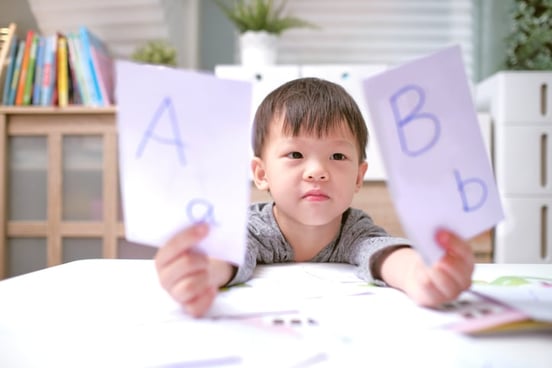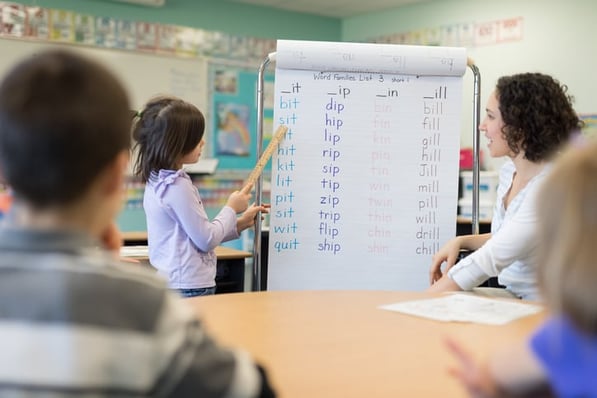Teaching Phonological Awareness and Decoding to Autistic Children
When children learn to read, they need to learn to make letter sounds and manipulate letter blends. For autistic children, developing this skill may be more difficult due to auditory processing difficulties and speech delays. Children must learn that words are made up of individual speech sounds, or phonemes. Phonological awareness is one of the first steps a child should take as he or she learns to read.
What Is Phonological Awareness?
Phonemes are individual sounds in words. Phonemic awareness comes when a child can make letter noises, such as "mmm" for the M sound. Phonological awareness is a literacy skill that helps children recognize and read the sounds of letter blends put together. Phonological awareness is the ability to hear and manipulate the sounds of spoken language. Developing phonological awareness is auditory and a child does not have to have the ability to read to practice blending and manipulating sounds.

Why Is Phonological Awareness Important?
Phonological awareness is the ability to hear, identify, and manipulate sounds in language. Even before a child can read, they can repeat the sound they hear in a word. Phonological awareness is important because it helps children build skills such as counting syllables, sound-matching, blending syllables, and adding or subtracting prefixes and suffixes. These skills help children’s reading development in recognizing spoken sounds and words.
How to Teach Phonological Awareness and Decoding to Autistic Children
Start by teaching your child how to identify phonetic sounds of letters and letter blends.
Use the Language Builder: Phonics & Sight Word Cards to support your child’s learning.
- Start with one easy-to-identify sound.
- Sit across from your child and make sure you have their attention.
- Place the letter card on the table and ask the child:
“Give me the one that says aaa.”
“Touch the letter that says mmm.”
“Find the fff letter.”
Point to the one that makes the buh sound.”
“Which one says puh?” - Prompt as necessary.
- Wait for the child to touch or give you the correct letter card.
- Reinforce as appropriate.
Once your child begins successfully identifying phonetic sounds:
- Have the child practice identifying phonetic sounds in new locations for generalization.
- Have the child identify phonemes when presented differently (tiles, cards, written on paper, on blocks, etc.).
- Practice identifying and reading phonemes in books.

Strategies for Teaching Autistic Children
In addition to using the Language Builder: Phonics & Sight Word Cards, autistic children may require additional strategies to help learn phonological awareness.
Here are some strategies to help your child practice their phonological awareness skills:
-
Offer simple instructions
Practicing the sounds of 26 letter sounds and endless letter blends can be overwhelming. When working with your child, give them simple, one-step directions. Start with simple sounds before practicing sound blends. And just do a few to start. -
Choose everyday words
Start with words and blends that may already be familiar to your child. Choosing words such as their name, “Mom,” “Dad,” or the names of siblings are good word choices to start breaking things down into more achievable steps. -
Provide motivation
Choose preferred television characters, images of friends and family, or pictures of favorite items to keep your child’s attention. They will be excited to practice saying the sounds that are part of the name or word they are looking at. -
Give positive reinforcers
Speech activities can be challenging. Reward your child as they progress. Take frequent breaks if needed and offer appropriate reinforcement through high-fives, song breaks, or toys. -
Provide opportunities for physical engagement
Starting breaking down sounds and syllables with music and movement. Clap, drum, jump, or spin as your child practices different sounds and blends them. -
Use hands-on-learning
Incorporate painting, drawing in sand, and building letters in clay. Not only does this help children practice creating letters, but it’s also an engaging way to motivate children to sit at the table and practice their phonological awareness skills. -
Make use of rhymes, songs, and books
Watching a lyrical sing-a-long song, rhyming, or reading a favorite book can be an exciting way to practice phonological awareness. Children can practice pronunciation and independently explore sounds and words that they’re interested in. The old child’s song “Apples and Bananas” is a fun children’s song that’s perfect for practicing phonological awareness.
Phonological awareness is an essential reading readiness skill for children. Through speaking, watching, singing, rhyming, reading, and playing, there are many ways to include sound play in your child’s daily routine. Be creative!
Let us know what strategies have worked for your child below.
The Language Builder: ARIS (Academic Readiness Intervention System) is now available to support teachers and parents in helping autistic children learn the skills they need to be successful. To try one of our ARIS lessons that teach phonological awareness, download a copy here for free.
This article is based on the following research and online resources:
https://www.readingrockets.org/teaching/reading-basics/phonemic
https://www.readinghorizons.com/blog/post/2011/05/05/why-phonics-helps-autistic-learners-read







